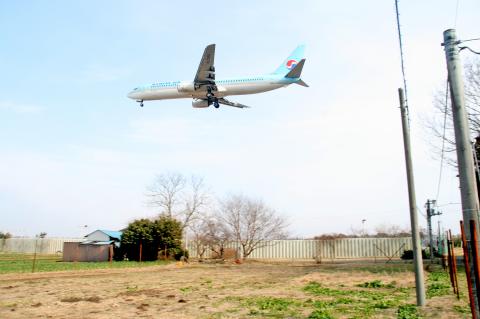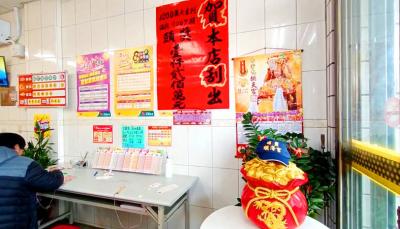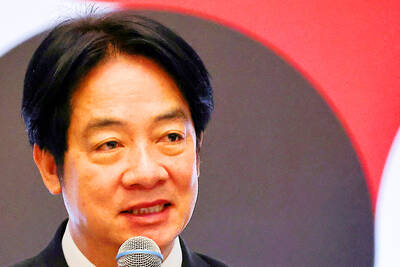While many families affected by the Taoyuan Aerotropolis project are fiercely resisting forced land seizures by the government, a group of people in Japan has been resisting expropriations for nearly 50 years and has blocked Narita International Airport — the largest airport in Japan — from being completed as initially planned.
With more than 200,000 flights landing and taking off, carrying more than 30 million passengers a year, Narita International Airport in Chiba Prefecture not far from Tokyo may seem to be just like any other busy airport at first sight, but travelers may notice something unusual, such as a large sign that says “down with Narita Airport” in both English and Japanese, as well as steel towers, some with protest banners hanging from them, right outside the airport fence.
“The airport is technically unfinished, though it has been in operation for decades,” said Eiichi Koyama, editor-in-chief of Weekly Sanrizuka and a member of the Farmers’ League Against Narita Airport, standing on one of the observation towers built by activists against land expropriation for Narita airport, right outside the airport fence. “The land expropriation is not done yet.”

Photo: Loa Iok-sin, Taipei Times
According to the original construction plan, which was revealed in 1966, Narita International Airport was supposed to have two 4km runways, one 3.6km runway and two 2.5km runways, but only the 4km runway A had been completed when the airport was opened in 1978, which was a seven-year delay as the airport was originally scheduled to be inaugurated in 1971.
It was not until 2002 that the 2.2km runway B — which was also supposed to be 4km long — was completed. It was later expanded to 2.5km in 2009, but the construction of the rest of the runways has been postponed indefinitely.
Within and outside the airport premises, there are still two private homes, an agricultural product manufacturing plant, a Shinto shrine and farms belonging to local residents who are opposed to forced expropriation for the airport that started nearly half a century ago.
“The resistance to the land seizures began when the government first announced that a new airport would be built in Sanrizuka village in Narita,” 92-year-old Koji Kitahara, who has headed the activist league since the beginning, told the Taipei Times. “The announcement came as a surprise, because we were never consulted in advance and I believe that anyone, anywhere, would rise up against it.”
In fact, it was the village of Tomisato — about 5km away — that was first selected for the airport, but the site was later relocated to Sanrizuka due to strong opposition.
“The Cabinet believed there would be less opposition because more than half of the land in Sanrizuka belongs to the Chiba Prefecture Government and the imperial family,” Kitahara said. “So, before we were consulted or reacted, the decision to move the project to Sanrizuka was finalized.”
He added that it took the government only two weeks between the first announcement and the final decision.
“We put a lot of hope in the Emperor, we petitioned him asking him not to agree to give up Imperial lands, but the emperor let us down,” Kitahara said. “To our disappointment, he quickly agreed to give up imperial estates for airport construction.”
Despite the disappointment, Kitahara and other Sanrizuka villagers — 325 families and more than 1,000 residents — continued to petition officials at the local and central level, but all efforts were in vain.
“We petitioned the Ministry of Land, Infrastructure, Transport and Tourism, but officials told us that they had no choice and asked us to tolerate it for the good of the public,” Kitahara said.
“Since my grandfather’s time, my family has been living here in Sanrizuka as farmers, growing agricultural products organically,” said Toichi Shito, a local farmer. “This is our home, we will not give it up.”
Shito said that in addition to families that have been living in Sanrizuka for centuries, there are many families of former soldiers or overseas Japanese who were settled in Sanrizuka by the government after World War II, and that it took them decades of effort and hard labor to improve the quality of the soil.
“How is it possible for them to just give up the land?” Shito asked.
At first, villagers’ protests were rather peaceful, but they turned violent when the government authorized forcible land expropriation and eviction of residents in 1969. The seizures did not happen until 1971, the year when the airport was supposed to have been completed under the original plan.
“Police and troops moved in, trying to tear down private homes and steel towers built by protesters — including local villagers, and thousands of university students and activists from across the country — leading to violent clashes,” said Koyama, who was among the student activists who joined the resistance movement in the 1970s.
Among a series of conflicts, the most severe occurred in September 1971 when 5,300 police officers clashed with about 5,000 protesters, leading to the arrest of 475 protesters, hundreds of injuries on both sides and the deaths of three officers.
Finally, the airport inauguration was set for 1978, but only one terminal and one runway had been completed at that time — and the inauguration was further postponed, since protesters occupied the control tower on the scheduled day of the inauguration on March 26 amid tightened security measures.
Following the bloodshed in the 1970s, the protests continued, but they were non-violent and still continue today — with the two private homes, a factory, shrine and farms remaining as enclaves within the airport, blocking it from being completed.
“Politicians have continued to try and convince me to give up by offering me government positions or large compensation, but I turned down all the offers,” Kitahara said.
“The government made a mistake. It has to apologize and to fundamentally change the way it makes decisions,” he said.
Koyama agreed, saying that it was a crime by the government and giving up would mean consenting to the government’s wrongdoing.
“This is why I’ve stayed in the movement for almost 40 years,” he said.

A Vietnamese migrant worker on Thursday won the NT$12 million (US$383,590) jackpot on a scratch-off lottery ticket she bought from a lottery shop in Changhua County’s Puyan Township (埔鹽), Taiwan Lottery Co said yesterday. The lottery winner, who is in her 30s and married, said she would continue to work in Taiwan and send her winnings to her family in Vietnam to improve their life. More Taiwanese and migrant workers have flocked to the lottery shop on Sec 2 of Jhangshuei Road (彰水路) to share in the luck. The shop owner, surnamed Chen (陳), said that his shop has been open for just

Global bodies should stop excluding Taiwan for political reasons, President William Lai (賴清德) told Pope Francis in a letter, adding that he agrees war has no winners. The Vatican is one of only 12 countries to retain formal diplomatic ties with Taiwan, and Taipei has watched with concern efforts by Beijing and the Holy See to improve ties. In October, the Vatican and China extended an accord on the appointment of Catholic bishops in China for four years, pointing to a new level of trust between the two parties. Lai, writing to the pope in response to the pontiff’s message on Jan. 1’s

TAKE BREAKS: A woman developed cystitis by refusing to get up to use the bathroom while playing mahjong for fear of disturbing her winning streak, a doctor said People should stand up and move around often while traveling or playing mahjong during the Lunar New Year holiday, as prolonged sitting can lead to cystitis or hemorrhoids, doctors said. Yuan’s General Hospital urologist Lee Tsung-hsi (李宗熹) said that he treated a 63-year-old woman surnamed Chao (趙) who had been sitting motionless and holding off going to the bathroom, increasing her risk of bladder infection. Chao would drink beverages and not urinate for several hours while playing mahjong with friends and family, especially when she was on a winning streak, afraid that using the bathroom would ruin her luck, he said. She had

MUST REMAIN FREE: A Chinese takeover of Taiwan would lead to a global conflict, and if the nation blows up, the world’s factories would fall in a week, a minister said Taiwan is like Prague in 1938 facing Adolf Hitler; only if Taiwan remains free and democratic would the world be safe, Deputy Minister of Foreign Affairs Francois Wu (吳志中) said in an interview with Italian newspaper Corriere della Sera. The ministry on Saturday said Corriere della Sera is one of Italy’s oldest and most read newspapers, frequently covers European economic and political issues, and that Wu agreed to an interview with the paper’s senior political analyst Massimo Franco in Taipei on Jan. 3. The interview was published on Jan. 26 with the title “Taiwan like Prague in 1938 with Hitler,” the ministry